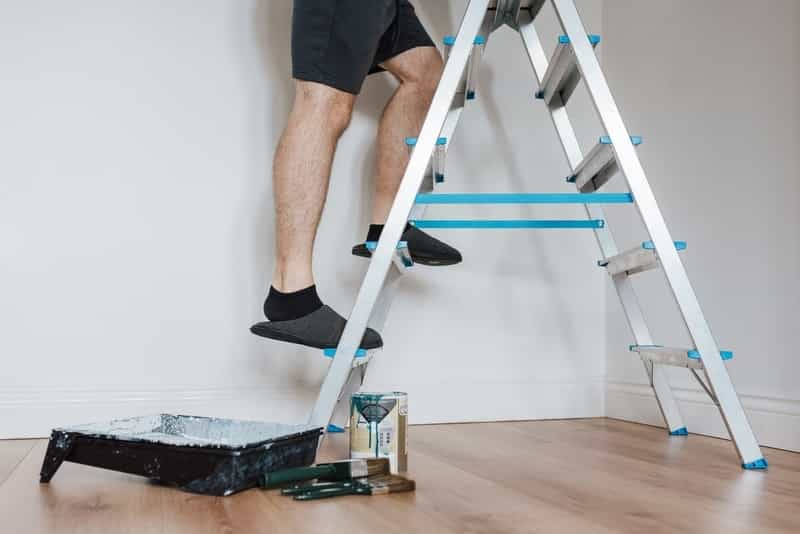Step ladders are a common sight across businesses and homes around the country – they’re simple to use and they’re handy for a range of tasks. Getting the perfect step ladder takes a little research and some expert advice, though. Luckily for you, we’re the experts. Read on for our guide to the perfect step ladder (as well as some essential safety tips).
Material
The step ladder you get needs to be strong enough to hold your weight plus any tools or paint cans. It must be light enough for you to manoeuvre it easily without a second person and it needs to be durable so you’re not replacing it every few years. Aluminium is the material of choice here as it ticks all those boxes, plus it is relatively inexpensive.
Other options include the classic wooden version, which is susceptible to rot if not properly stored and maintained, and fibreglass, which compares favourably with aluminium in every respect – except price. The average user does not need the extra strength that fibreglass provides, so it is more cost-effective to stick with aluminium.
Height
Always get a sturdy step ladder that is taller than you think you need. You can’t/shouldn’t ever stand on the top three rungs of the ladder (including the platform) and over-reaching or stretching is the number one cause of step ladders toppling over. The extra height will allow you to work comfortably without having to stretch.
Special features
We’ve mentioned fibreglass ladders already – they’re a great option, just costly. If you are likely to be engaged in a lot of electrical work though, the extra cost is more than worth it. Fibreglass is non-conductive, so you get extra protection from accidental electric shocks.
And if you’re looking to use your ladder outdoors or in damp environments it’s worth getting one with rubber treads to add traction. The last thing you want when you’re climbing your ladder is for your feet to go out from underneath you, and these grips will minimise the risk.
Safety
Modern step ladders have built-in safety features to reduce the risks to your health and safety. These features do depend on you using them, though, so always make sure your ladder is set up correctly with the arms separating the two sides of the ladder in the rigid, straight and locked position. If the platform has a locking hook, make sure that is used, too – at a minimum the platform should be flat. Your ladder should have a maximum load capacity, either by step or in total, don’t exceed this as the step could break beneath you.
Before you even set foot on your ladder, you should check it over for any damage each and every time. Also take this opportunity to make sure that the steps are clean and dry – spilled paint or other liquids, dirt and debris can present a slip hazard which is even worse at height than it is on the ground.
Next, always use the ‘three points of contact’ technique, in which you always have both feet and one hand on the ladder. This will vastly reduce the likelihood of you overbalancing. Never turn around on the ladder, tempting as it might be – you should always be facing the rungs and platform. Finally on safety, all four feet of the ladder should be on level, firm and dry ground.


